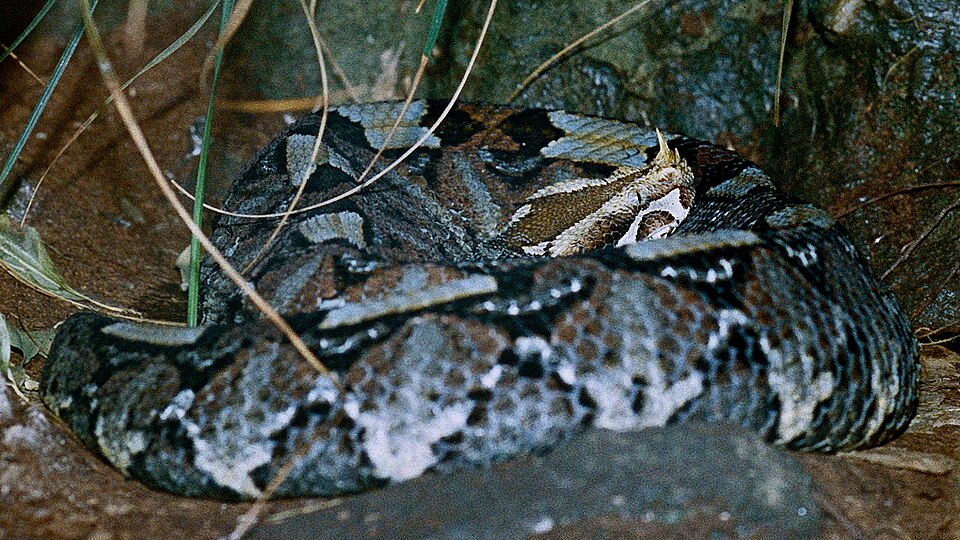In the mysterious world of animal mimicry, few creatures have perfected their disguise as masterfully as the bark-mimicking snakes. Among these remarkable reptiles, certain species have evolved to resemble not just any bark, but specifically the crumbling, decaying bark of ancient trees. This specialized form of camouflage represents one of nature’s most sophisticated evolutionary adaptations, allowing these serpents to become virtually invisible to both predators and prey. As we delve into the fascinating world of these cryptic reptiles, we’ll discover how evolution has sculpted their appearance, behavior, and survival strategies to create one of the natural world’s most perfect disguises.
The Rhinoceros Viper: Master of Disguise
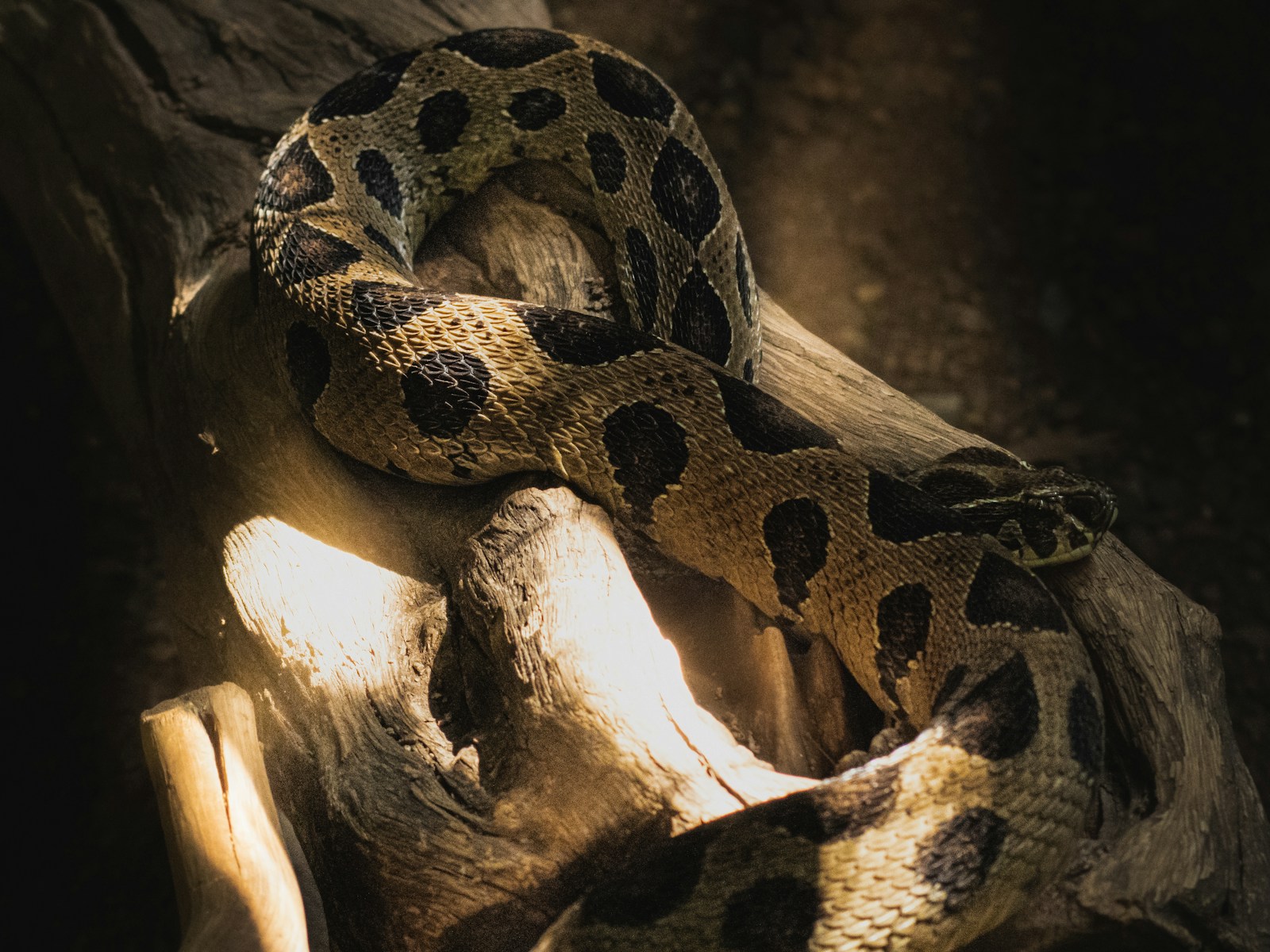
The Rhinoceros Viper (Bitis nasicornis) stands out as perhaps the most accomplished bark-mimicker in the snake world. Native to the forests of Central and Western Africa, this venomous viper possesses intricate geometric patterns in browns, blacks, and blues that perfectly resemble the texture of decaying tree bark. The snake’s rough, heavily keeled scales create a three-dimensional effect that mimics the uneven surface of weathered bark, complete with what appears to be fungal growth and lichen. When motionless against a tree trunk, the Rhinoceros Viper’s distinctive horn-like scales above its nostrils actually resemble small protrusions of bark, completing an illusion so perfect that even experienced herpetologists have difficulty spotting them in their natural habitat.
The Gaboon Viper’s Evolutionary Marvel
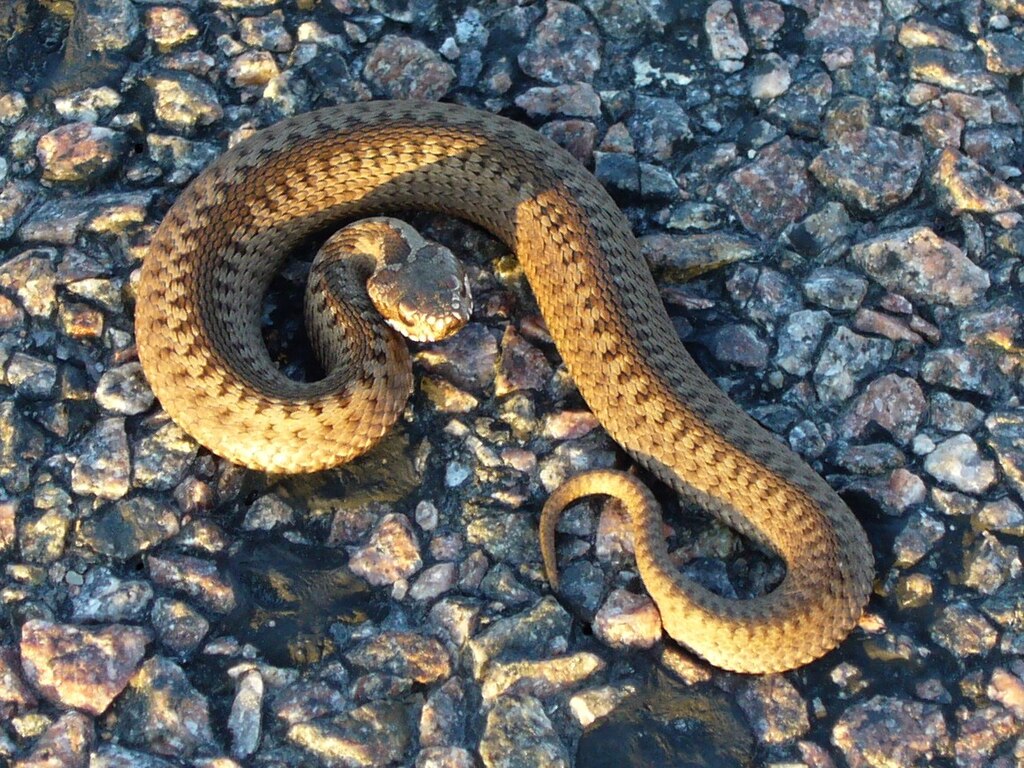
The Gaboon Viper (Bitis gabonica) represents another extraordinary example of bark mimicry, possessing what might be the most complex pattern of any snake species. This venomous African viper displays an intricate mosaic of geometric shapes in various shades of brown, purple, and pink that precisely match the appearance of tree bark covered with patches of lichen and fungus. Its exceptionally cryptic coloration is complemented by a leaf-litter-like pattern that blends seamlessly with the forest floor when the snake isn’t positioned on a tree. The Gaboon Viper’s extremely broad, flat head enhances this disguise by breaking up its snake-like silhouette, while its massive body—which can exceed 6 feet in length and weigh over 25 pounds—seems to disappear completely when pressed against weathered bark. This remarkable camouflage allows it to remain undetected while ambushing prey, despite being one of Africa’s largest vipers.
The Bush Viper’s Textured Perfection

The Bush Viper (Atheris species) has evolved highly specialized scales that create a rough, textured appearance perfectly mimicking crumbling bark and lichen. These arboreal vipers from Africa possess strongly keeled scales that stand out from their bodies, creating a three-dimensional texture that breaks up their outline against tree bark. Different species within this genus display various color combinations—from bright greens to rusty browns and grays—allowing them to match different stages of bark decay and moss growth. The serpent’s slender build and prehensile tail are perfectly adapted for tree dwelling, while their rough scales not only provide camouflage but also create friction that helps them grip branches. When motionless on a tree trunk, these vipers blend so perfectly with their surroundings that they seem to materialize out of the bark itself when they finally move.
The Eyelash Viper’s Specialized Adaptations
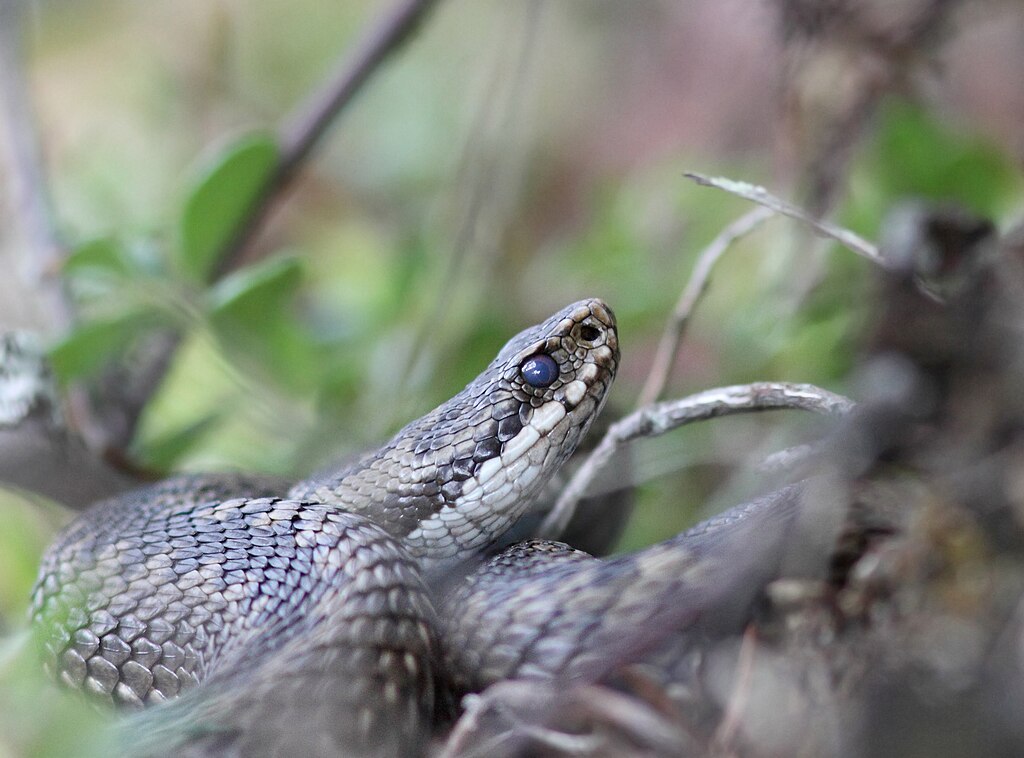
The Eyelash Viper (Bothriechis schlegelii) from Central and South America demonstrates how specialized bark mimicry can evolve in different forest ecosystems. While often known for its bright yellow or green varieties, this species also appears in brown and gray morphs that perfectly match weathered tree bark. The snake’s most distinctive feature—the modified scales above its eyes that resemble eyelashes—actually helps break up the outline of its head against bark textures. These supraocular scales add to the irregular appearance that mimics the uneven surface of deteriorating bark. The Eyelash Viper’s slender body and preference for remaining motionless for extended periods enhance its disguise, allowing it to ambush prey that passes within striking distance without ever detecting the predator hiding in plain sight.
The Python Family’s Bark Mimicry
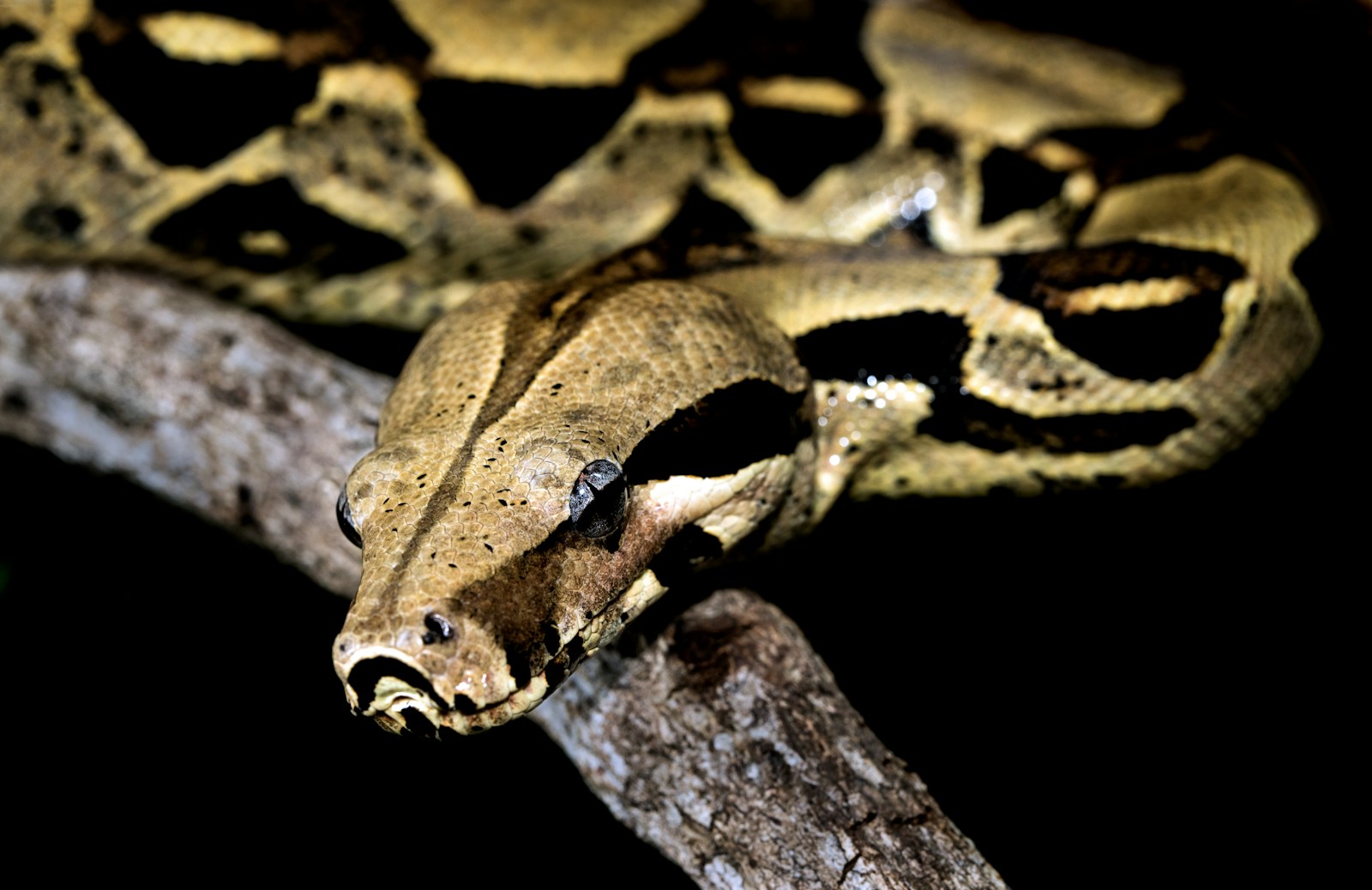
Several python species have evolved remarkable bark-mimicking capabilities, with the Calabar Ground Python (Calabaria reinhardtii) being particularly noteworthy. This West African python displays a mottled pattern of browns and blacks that closely resembles decaying wood and peeling bark. Unlike the vipers previously mentioned, this non-venomous python relies entirely on its camouflage for protection rather than dangerous venom. The Calabar Python exhibits an unusual defensive behavior that enhances its bark disguise—when threatened, it hides its head within its coiled body and presents its tail, which resembles a head with markings that mimic eyes. This double mimicry creates the illusion of both bark and a false head, confusing potential predators about which end to attack. Their cylindrical body shape and rough scales further enhance the resemblance to a piece of fallen, decaying branch.
The Scientific Mechanism Behind Bark Mimicry
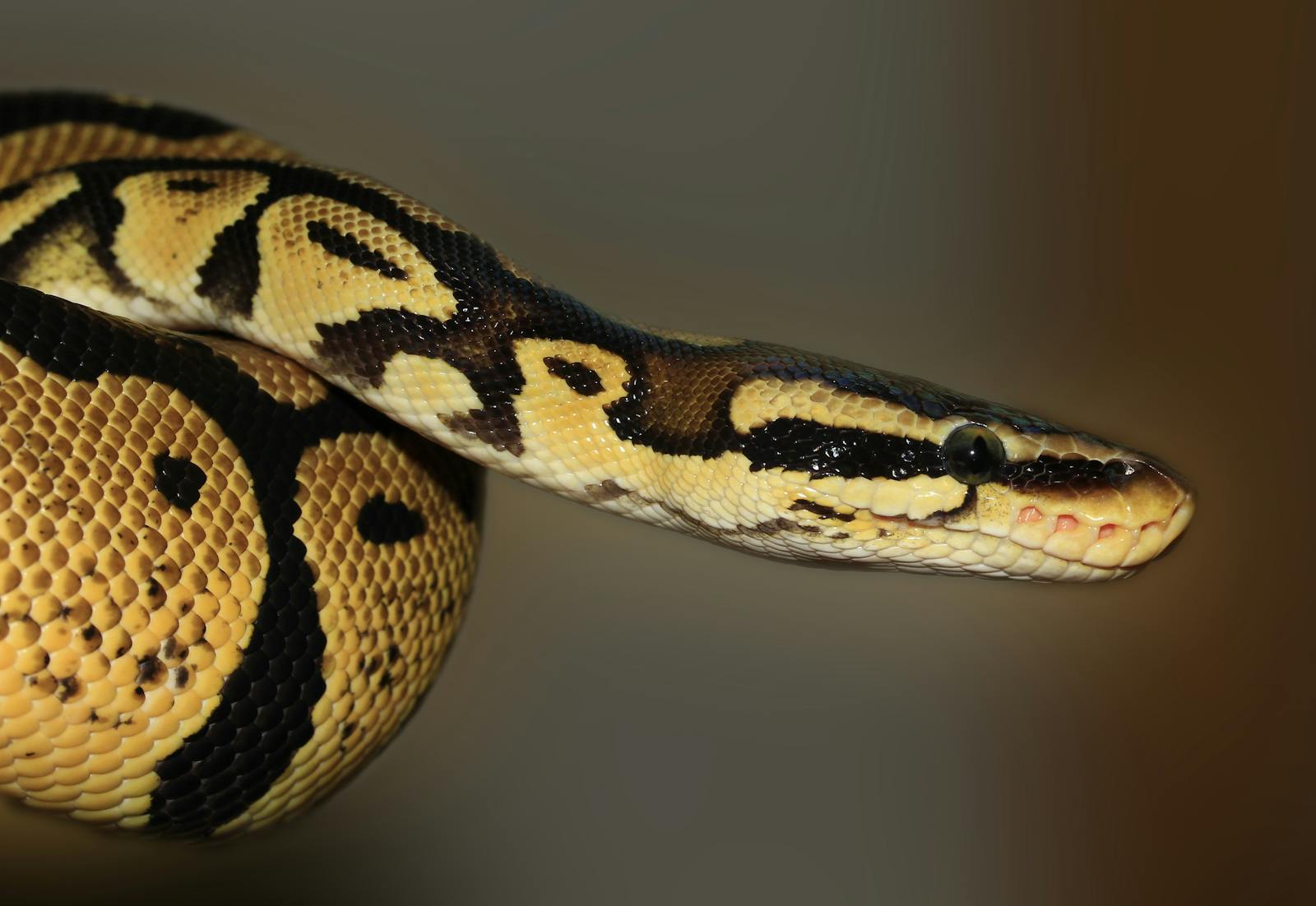
The evolution of bark mimicry in snakes represents a textbook example of convergent evolution, where unrelated species develop similar traits in response to similar environmental pressures. This sophisticated camouflage has evolved through natural selection over millions of years, with snakes that better matched their surroundings surviving at higher rates than their more visible counterparts. The mimicry involves multiple aspects of the snake’s morphology, including scale texture, color patterns, body shape, and even behavioral adaptations that maximize the effectiveness of the disguise. Interestingly, the genetic basis for these complex patterns involves the interaction of multiple genes controlling pigment distribution, scale development, and pattern formation. Recent research has identified some of the developmental pathways responsible for these intricate patterns, revealing sophisticated genetic mechanisms that produce what amounts to living artwork perfectly matched to specific environments.
Behavioral Adaptations That Enhance the Disguise
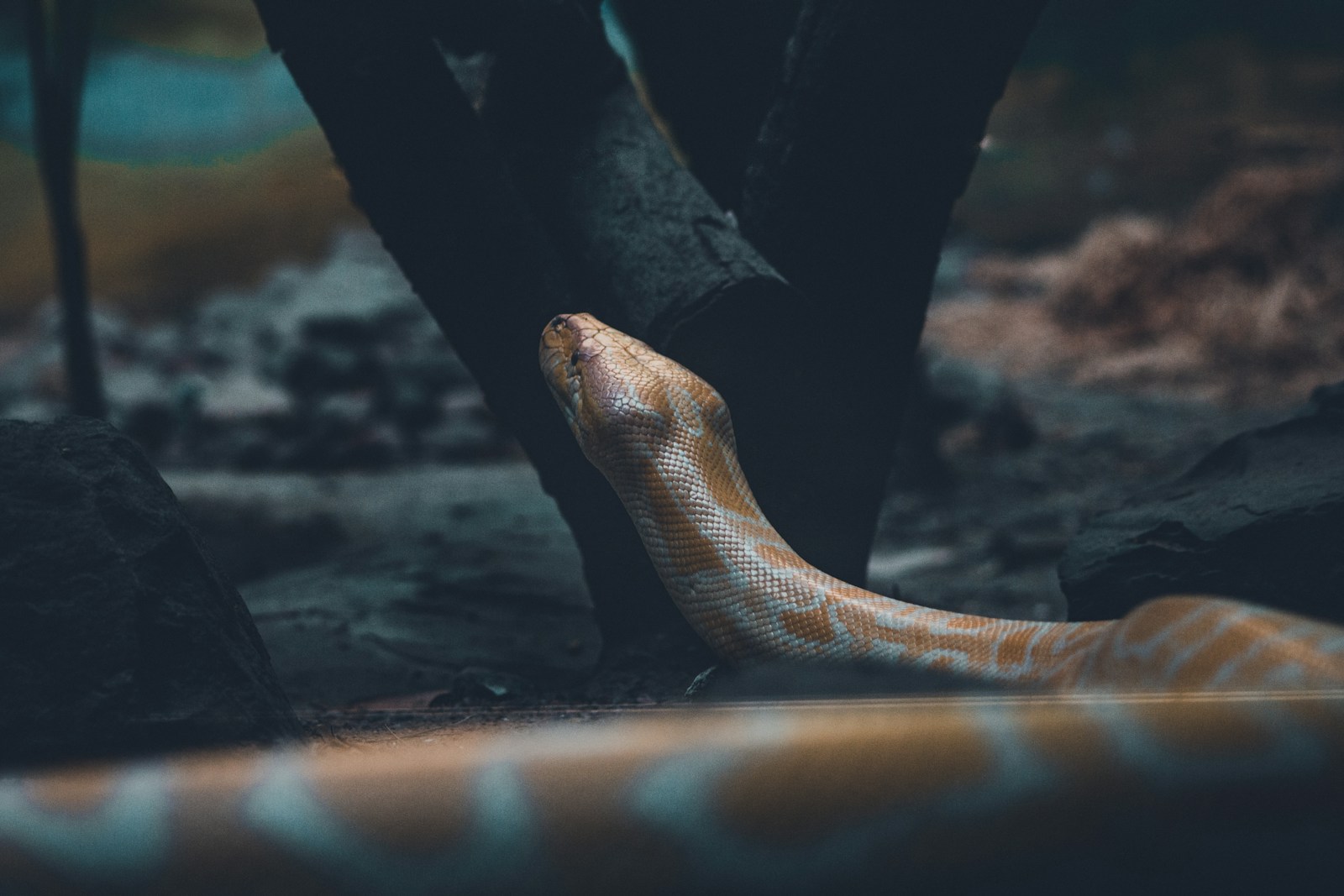
Bark-mimicking snakes have evolved behavioral traits that significantly enhance their physical camouflage. Most notably, these species display extraordinary patience, remaining completely motionless for hours or even days at a time. This stillness is crucial, as even the most perfect visual disguise would be betrayed by movement. Many species also adopt specific body positions that maximize their resemblance to bark features—some flatten their bodies against the tree, while others position themselves along natural cracks or protrusions in the bark. Several species, particularly the vipers, will press themselves into depressions on the tree’s surface, further blurring the boundary between snake and bark. Additionally, most bark-mimicking species are nocturnal, hunting under the cover of darkness when their camouflage is most effective and repositioning themselves before daylight exposes them to daytime predators.
The Ecological Advantage of Matching Decaying Bark
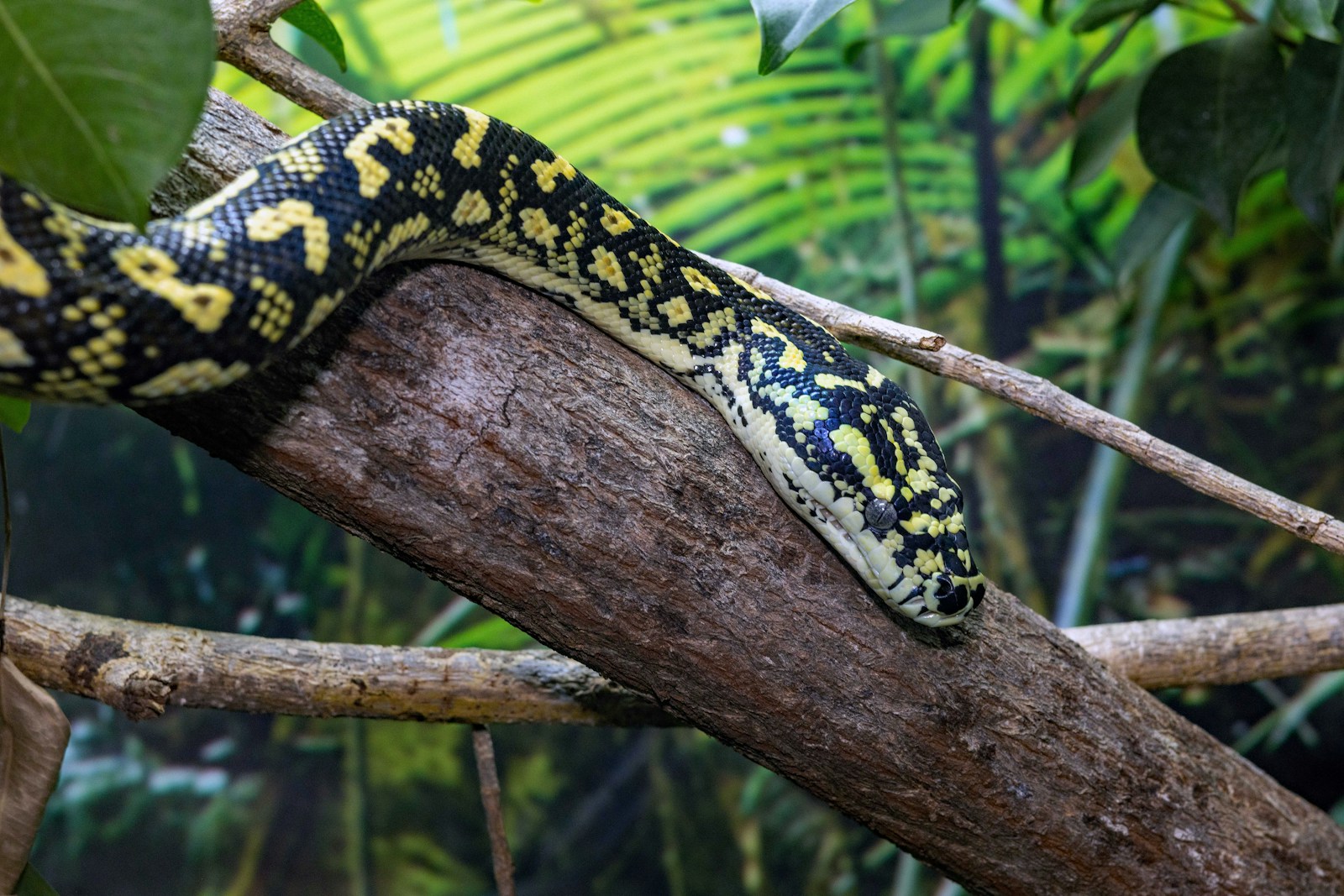
There’s a significant ecological advantage to mimicking specifically old, decaying bark rather than fresh, smooth bark. Decaying bark offers a much more complex visual environment with varied textures, colors, and patterns that provide more elements for the snake to blend with. Old trees harbor multiple microhabitats with fungi, lichens, mosses, and various stages of decomposition that create a visually chaotic surface—perfect for hiding a predator. Additionally, decaying trees attract numerous insects and small vertebrates that feed on the decomposing matter or the organisms growing on it, providing a ready food source for the hidden snake. The irregular surface of deteriorating bark also offers more crevices and hiding spots than smooth bark, giving these snakes additional physical concealment beyond their visual camouflage. This specialized mimicry demonstrates how evolution can produce highly specific adaptations tailored to particular microhabitats within broader ecosystems.
The Japanese Rat Snake’s Remarkable Bark Resemblance

The Japanese Rat Snake (Elaphe climacophora) offers an excellent example of bark mimicry from the colubrid family, demonstrating that this adaptation has evolved across multiple snake lineages. This non-venomous species displays a pattern of intricate browns and grays that perfectly match the appearance of Japanese pine tree bark. Unlike the ambush predators previously discussed, the Japanese Rat Snake actively hunts for rodents and birds but relies on its bark-like appearance to avoid detection by both prey and predators. Fascinating research has documented regional variations in this species’ coloration that correspond exactly to the predominant tree species in different parts of Japan—snakes from areas with darker bark trees have evolved darker patterns, while those from lighter-barked forest regions show lighter, more mottled patterns. This localized adaptation demonstrates the remarkable precision with which natural selection can fine-tune camouflage patterns to specific environments.
Predators and Threats to Bark-Mimicking Snakes

Despite their remarkable camouflage, bark-mimicking snakes face numerous threats from predators that have evolved countermeasures to their disguise. Birds of prey, particularly owls with their exceptional night vision, can detect the subtle differences between snake and actual bark. Certain mammals, especially mongooses and some primates, have developed specific snake-detection abilities that allow them to spot well-camouflaged serpents. Perhaps most threatening are other snakes, particularly the king cobras and king snakes, which specialize in hunting other serpents and have likely evolved enhanced abilities to see through the bark disguise. Human activities pose an additional threat, as deforestation eliminates the specific microhabitats these specialized snakes depend on. The intricate relationship between these snakes and old-growth forests means that when ancient trees are lost, the perfectly adapted snakes that evolved to mimic them frequently disappear as well.
Conservation Challenges for Specialized Mimics
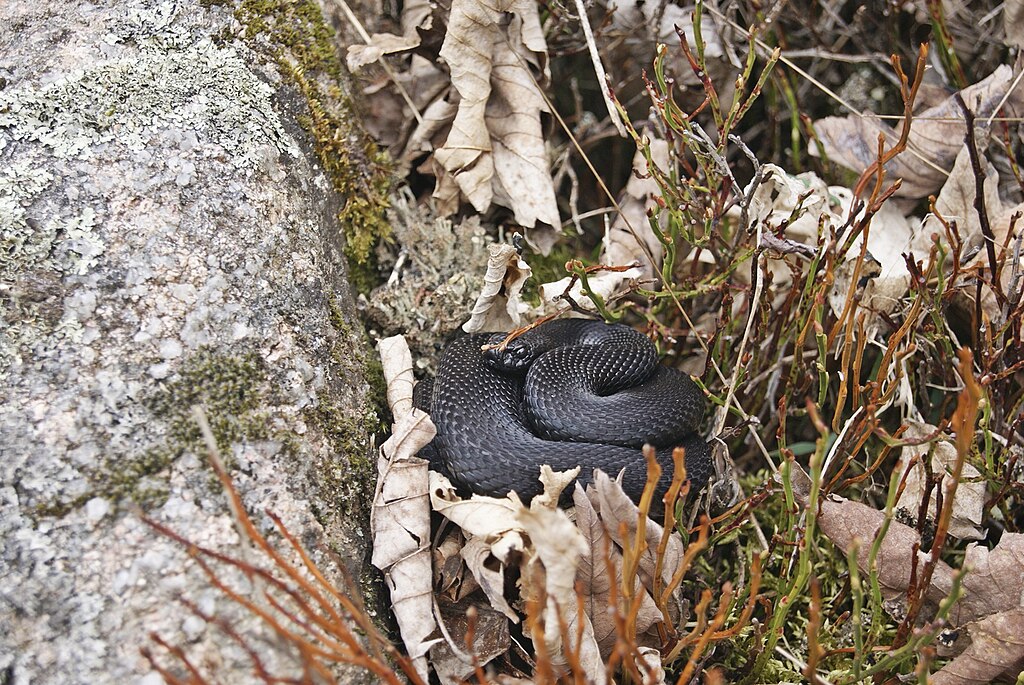
The highly specialized nature of bark-mimicking snakes creates unique conservation challenges for protecting these remarkable creatures. Many species have evolved to match the bark of specific tree species in old-growth forests, making them particularly vulnerable to habitat loss and fragmentation. Unlike generalist species that can adapt to modified environments, these specialized mimics often cannot survive in secondary forests or plantation settings where the bark textures and colors they evolved to match are absent. Climate change poses an additional threat, as it alters the distribution of tree species and can disrupt the precise visual environment these snakes depend on for camouflage effectiveness. Conservation efforts for these species must focus on preserving intact forest ecosystems with diverse age structures, including the old, decaying trees that these snakes have evolved to mimic over millions of years of evolution.
Photography and Documentation Challenges
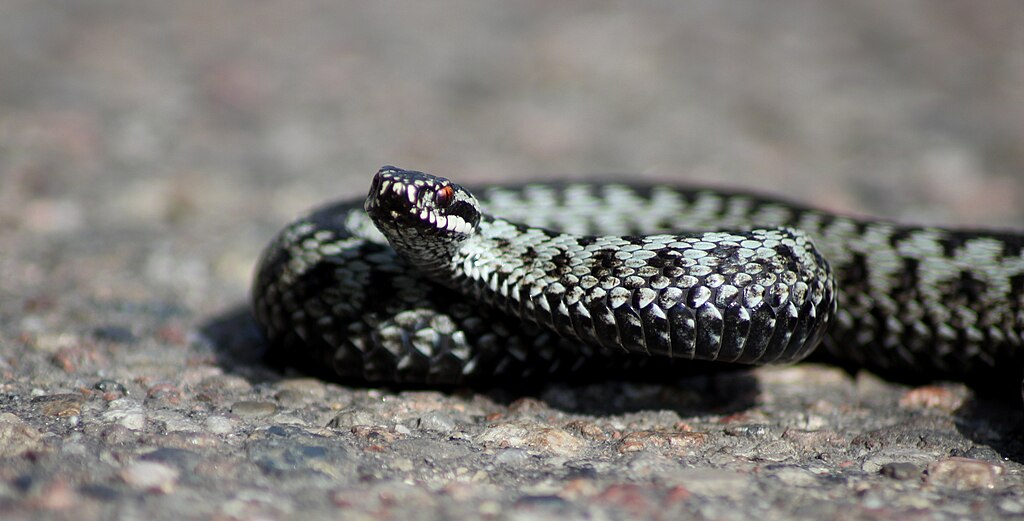
The extraordinary effectiveness of bark mimicry creates significant challenges for wildlife photographers and researchers attempting to document these species. Professional wildlife photographers report spending days searching for specimens that may be hiding in plain sight, often locating them only when the snake moves. This difficulty in detection has likely contributed to gaps in our scientific understanding of these species, as field researchers face the same challenges in locating specimens for study. Specialized techniques have been developed for locating bark-mimicking snakes, including searching at night with infrared equipment when the temperature difference between the snake and the bark makes them more visible. The challenge of photographing these masters of disguise has created a specialized niche in wildlife photography, with images that successfully capture both the snake and its camouflage context being highly prized for their ability to demonstrate this remarkable evolutionary adaptation.
Conclusion

The extraordinary bark-mimicking snakes of the world represent one of nature’s most remarkable evolutionary achievements. Through millions of years of natural selection, these reptiles have developed astonishingly precise physical and behavioral adaptations that transform them into living components of the trees they inhabit. Their specialized camouflage not only demonstrates the power of evolutionary processes but also highlights the intricate relationships between organisms and their specific microhabitats. As we face continuing challenges of habitat loss and climate change, preserving these masterpieces of natural adaptation becomes increasingly urgent. The snake that disappears against crumbling bark serves as a powerful reminder of nature’s capacity for remarkable specialization and the importance of protecting the ancient forests where such evolutionary marvels continue to unfold.

